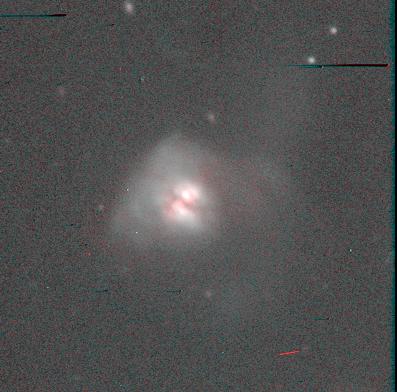
This composite of R-band and Ha images shows the merging system Arp 220, which achieved great fame as one of the first galaxies identified from the IRAS mission as putting out most of its energy in the far-infrared. This meant that its main energy source was deeply shrouded in dust, leading to many efforts to understand whether these galaxies are powered by active nuclei, bursts of star formation, or something else entirely. Arp 220 shows many of the features of merging systems, including chaotic inner structure, disturbed dust, and a double nucleus in the infrared and radio regimes. The double nucleus is so deeply shrouded that it is still affected by absorption in near-IR Hubble images.
These data were obtained using a TI CCD on the 2.1m telescope of Kitt Peak National Observatory. North is up and east to the left for this 155-arcsecond field. Continuum light in the red band shows up as white, with Ha emission added as red. A modified logarithmic intensity mapping helps show detail over a wide range in brightness. Arp 220 lies about 250 million light-years away in the direction of the constellation Serpens.
Last changes: May 2003 © 2003